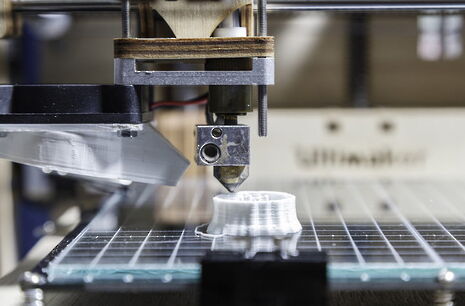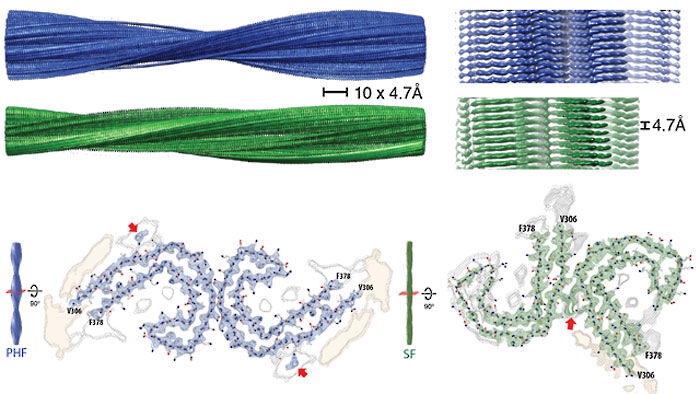Finding a cure using 3D printed drugs
CyclePharma, a Cambridge pharmaceutical startup, specialises in recycling drugs for very rare diseases. They think 3D printed drugs can help

Many rare diseases, also called orphan diseases, are so unalike to others that gaining support and research for a small group of patients can be very difficult. CyclePharma, or colloquially referred to as ‘Cycle’, a pharmaceutical start-up in Cambridge, is seeking to find the cure for those patients. “Rare diseases [and rare] children’s diseases are being defined [faster] than treatments are found, so the number of untreated rare diseases are going up rather than going down. These [patients] don’t have much of a voice because [the public] can’t get these diseases, and so public money goes into research for cancer and heart disease.” Cycle has stepped up to fill the hole that other pharmaceutical companies neglected. “We believe we’re helping people who are struggling with real quality of life issues”.
Our first drug, treating a rare disease, started off life as an herbicide
CyclePharma’s Executive Chairman, James Harrison, speaks passionately about helping children struggling with rare diseases. “For [genetic rare] diseases, drugs treat, they don’t cure, and therefore they’re lifelong drugs. It really matters if you can improve it.” Cycle believes that the cures can be found in existing drugs which have already hit the pharmaceutical market. Utilising approved chemicals lets Cycle bypass colossal barriers, such as confirming the safety of the pharmaceuticals, to successful drug development. “It can cost hundreds of millions of dollars to bring a brand new drug to market these days, [when] taking into account the failure rate through the clinical development process. We don’t like that. What we try and do is try and stand on the shoulders of scientists of the past.” CyclePharma specialises in finding new targets for existing pharmaceuticals. “Our first drug, treating a rare disease, started off life as an herbicide.”

While this repurposed drug hits the market, in other rare pediatric diseases, swallowing is a big problem, thus requiring large numbers of pills to receive sufficient doses. “This is the main issue for 100% of patients of our first drug, which is about 10,000 children.” Thus Cycle has partnered with Aprecia Pharmaceuticals in Ohio to begin to tackle this issue. James brings out a large mint-like pellet made with 3D printing technology, which, when ingested, instantly dissolved with a small sip of water. “We think this would make a big difference to patients with difficulty swallowing, [as there can be] up to a gram of active ingredients in [the mint-like pellet].” Patients with dysphagia, or difficulty in swallowing, can have enormous problems with drug compliance simply because the act of swallowing is too difficult due to the symptoms of the disease. Such a drug delivery method could revolutionise the whole industry.
Not only are their drugs innovative, Cycle’s business model is also inventive. “We like to think of ourselves as a creative organisation. We outsource all our development work, proof work, clinical work, and manufacturing, but control it from here in Cambridge.” This model combines the strength of both industry and academia to maximise results. “There’s things that we can do that academics can’t do to bring a drug to market, as we have an awful lot of regulatory knowledge. In the same vein, we don’t have their science, and so [to] find that, we work with universities all over the world.”
That CyclePharma’s offices are in Cambridge is no coincidence either. “So the reason we’re here as a company is to benefit from close collaboration with the University, Addenbrookes, the whole medical effort here. If we can’t get a question answered in Cambridge, on the science side, then it’s not the right question.” James hopes that Cycle’s future will involved a healthy collaboration with the University and its students as he looks forward to a bright future.
 News / Downing investigates ‘mysterious’ underground burial vault 29 December 2025
News / Downing investigates ‘mysterious’ underground burial vault 29 December 2025 News / Unions protest handling of redundancies at Epidemiology Unit30 December 2025
News / Unions protest handling of redundancies at Epidemiology Unit30 December 2025 Lifestyle / Ask Auntie Alice29 December 2025
Lifestyle / Ask Auntie Alice29 December 2025 Features / ‘Treated like we’re incompetent’: ents officers on college micromanagement30 December 2025
Features / ‘Treated like we’re incompetent’: ents officers on college micromanagement30 December 2025 Science / Astronomical events to look out for over the break29 December 2025
Science / Astronomical events to look out for over the break29 December 2025










